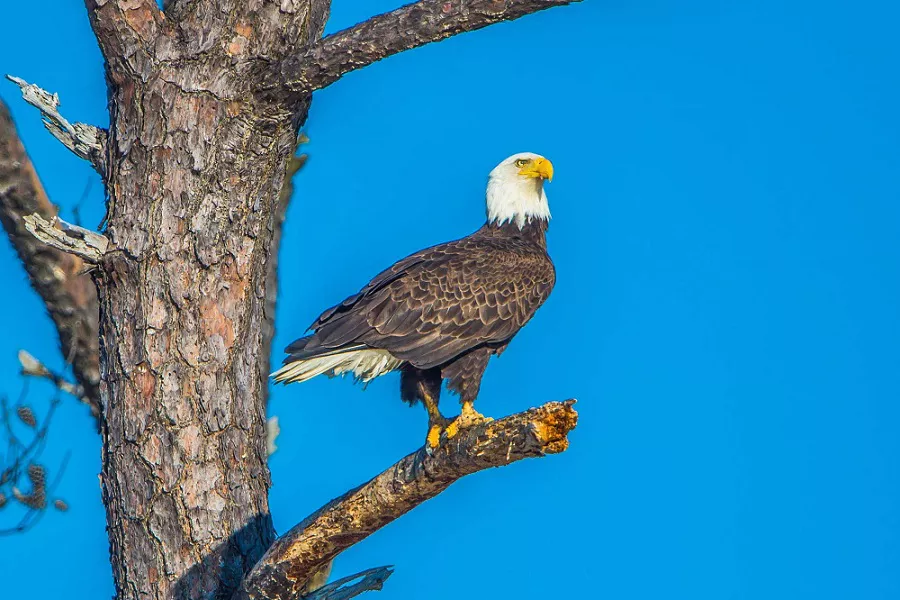The Bald Eagle, also known as the American Eagle, is a bird of prey that is native to North America. It is known for its distinctive appearance, with a white head and tail, brown body, and yellow beak and feet. While once considered an endangered species, the Bald Eagle has made a remarkable comeback in recent years, thanks to conservation efforts and stricter regulations on hunting and habitat destruction.
Population and Distribution
The Bald Eagle is not as rare as it once was. According to the U.S. Fish and Wildlife Service, there were an estimated 143,000 Bald Eagles in North America in 2009. The population has been steadily increasing since the 1970s, when the species was first listed as an endangered species due to habitat loss, hunting, and pesticide use.
Today, Bald Eagles can be found in every state in the United States except Hawaii. They are also found in parts of Canada and Mexico, and can be seen in a variety of habitats, from coastal areas to lakes and rivers.
Conservation Efforts
The recovery of the Bald Eagle population is largely due to conservation efforts that have been implemented over the years. In the 1970s, the use of the pesticide DDT was banned in the United States, which helped to reduce the chemical’s impact on the environment and the Bald Eagle population. Additionally, the Bald and Golden Eagle Protection Act, which was enacted in 1940, prohibits the hunting, possession, or sale of Bald Eagles and their parts, except under certain circumstances.
Habitat conservation efforts have also played a significant role in the recovery of the Bald Eagle population. Wetland conservation and restoration, protection of nesting sites, and the creation of wildlife refuges have all helped to provide suitable habitats for Bald Eagles to thrive.
Protection Status
Despite the increasing population of Bald Eagles, the species is still considered to be protected under the U.S. Endangered Species Act, as well as the Migratory Bird Treaty Act. This means that any hunting, possession, or disturbance of Bald Eagles or their nests is strictly prohibited without a permit.
While the Bald Eagle population has made a significant recovery in recent years, it is still important to protect these majestic birds and their habitats. Conservation efforts, along with continued awareness and education, will ensure that future generations can enjoy the sight of these remarkable creatures in the wild.


 Facebook
Facebook  Instagram
Instagram  Youtube
Youtube 